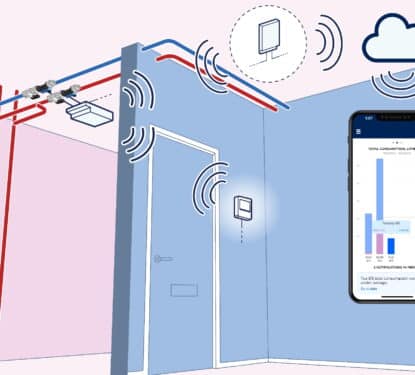Are you confused by the Open Standards Landscape in Smart Building Technology? Below is our live stream recording, which serves as a non-technical guide to the types of protocols, and data frameworks used in commercial buildings and why they matter! Improve your understanding of open standards & their impact on smart buildings!
The session will equip you with a basic knowledge of why integration costs for many smart building projects remain high, and how open standards help to reduce cost and enable interoperability. Anyone who wants to learn about open standards and is involved in making commercial building technology decisions.
Summary of Smart Building Open Standards Live Stream
The Interoperability Challenge
Most commercial buildings, particularly older ones, operate with disconnected systems. HVAC doesn’t communicate with lighting, energy management software don’t receive data from occupancy sensors, and proprietary ecosystems create technological silos.
Manufacturers have historically designed their systems to work exclusively within their own product families, similar to Apple’s closed ecosystem approach. While this creates well-integrated experiences within a single vendor’s offerings, it presents significant challenges when integrating across multiple systems and manufacturers.
The reality is that buildings are complex environments with numerous interconnected systems. No single vendor can realistically provide every component needed, making some level of cross-system integration inevitable. Without standards, this integration typically requires expensive custom work, middleware platforms, or complete system overhauls.
Why Open Standards Matter
The importance of open standards can be understood through the analogy of Wi-Fi. We take for granted that any device can connect to any Wi-Fi network because of universally adopted standards. Without these standards, your device would only connect to networks using the same manufacturer’s equipment, severely limiting utility.
Open standards create numerous benefits:
- Foster a more competitive marketplace where vendors compete on features, reliability, and price rather than proprietary lock-in
- Enable selection of best-in-class solutions for each building system
- Reduce long-term costs through simpler integration and future-proofing
- Support innovation by creating clear technical frameworks
Building Automation Protocols
These standardized communication methods enable different building systems to exchange information. They primarily operate at the field/automation level, connecting physical hardware components with management software.
Key protocols include:
- BACnet: Developed by ASHRAE in the 1990s, it’s the most influential global standard in modern building automation, continuously evolving with innovations like BACnet Secure Connect.
- KNX: Popular in Europe for both residential and commercial applications.
- Modbus: Dating back to the 1970s, originally developed for industrial control systems
Application Layer Protocols
These operate at higher levels of the technology stack, responsible for formatting and translating data between applications across different networks or to the cloud. They function as translators or traffic managers, moving data efficiently between building systems and software applications.
Notable examples include:
- MQTT: A lightweight messaging protocol popular for IoT applications due to its efficiency with real-time data transmission and low bandwidth requirements
- CoAP: A lightweight version of HTTP optimized for IoT
- OPC UA: Bridges industrial systems and modern IT environments with comprehensive information modeling and built-in security features
Data Frameworks and Models
While protocols enable communication, data standards provide common vocabulary and relationships that give meaning to raw building data. They solve problems like inconsistent naming conventions (one system labeling a sensor “RM101_temp” while another calls it “zone3_airtemp”).
Leading data frameworks include:
- Brick Schema: Focuses on technical equipment, actuators, and mechanical systems
- Project Haystack: Emphasizes consistent data tagging methodologies
- RealEstateCore: Approaches modeling from the property management perspective
The industry is seeing increasing collaboration between these frameworks through initiatives like ASHRAE 223P, which aims to provide a consistent foundation for building data modeling.
The convergence of data standards is particularly exciting for the future of AI in building management. For AI agents to effectively optimize building operations, they require standardized data structures. These emerging standards will be crucial for achieving truly automated, interoperable building controls.




